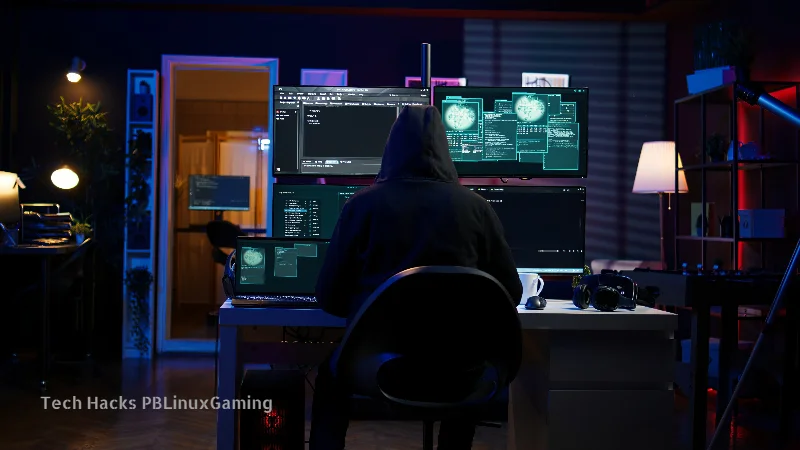Gaming on Linux has transformed significantly over the past decade. What was once a niche interest limited by compatibility concerns has grown into a thriving ecosystem supported by powerful hardware, community-driven projects, and robust open-source tools. For enthusiasts of PBLinuxGaming, mastering a few essential tech hacks can make all the difference. Whether it’s optimizing performance, configuring controllers, improving system stability, or pushing visuals to the next level, these hacks are designed to unlock the full potential of Linux as a gaming platform.
This article provides an in-depth guide to tech hacks for PBLinuxGaming, offering solutions for common challenges and pro-level adjustments that bring your system closer to perfection. With practical advice for gamers at every level, these techniques help transform a regular Linux setup into a reliable and high-performance gaming environment.
Why Tech Hacks Matter in PBLinuxGaming
Linux is known for its flexibility and control, but that freedom also means gamers must often configure things themselves. Unlike some other platforms, where gaming is almost entirely plug-and-play, Linux provides room for fine-tuning. Tech hacks allow players to:
-
Enhance performance by reducing latency, improving frame rates, and eliminating stutter.
-
Ensure compatibility with a wider range of titles, from native Linux games to Windows-only releases.
-
Customize gameplay through controller setups, graphic tweaks, and modular add-ons.
-
Improve stability by tackling crashes, driver issues, and resource conflicts.
-
Optimize resource usage so your hardware delivers maximum results without overheating or draining unnecessary power.
For PBLinuxGaming, these hacks create a seamless bridge between open-source systems and high-end gaming demands.
Hardware Optimization for Linux Gaming
Selecting the Right GPU Drivers
Graphics cards play a central role in gaming. On Linux, using the proper drivers can make or break performance. NVIDIA users often prefer proprietary drivers for better stability, while AMD cards perform exceptionally well with open-source Mesa drivers. The right driver ensures maximum frame rates, proper shader support, and reduced graphical glitches.
Overclocking for Extra Performance
Overclocking is one of the most popular tech hacks in the gaming world. Tools available on Linux allow users to tweak GPU and CPU speeds for higher performance. While caution is necessary to avoid overheating, modest overclocking can add noticeable boosts in demanding games.
Cooling and Thermal Management
Gaming generates heat, and poor thermal control can reduce system performance. Installing fan control utilities or creating custom cooling profiles helps maintain stable temperatures. This ensures consistent gameplay and protects your hardware from long-term damage.
Software-Level Hacks for PBLinuxGaming
Utilizing Proton for Windows Games
One of the biggest advantages of Linux gaming today is Proton, a compatibility layer that allows Windows-based games to run smoothly. Tinkering with Proton versions for specific titles can solve performance hiccups or fix launch issues.
Enabling Vulkan for Enhanced Graphics
The Vulkan API delivers lower overhead and better graphics rendering compared to older APIs like OpenGL. Enabling Vulkan in supported games leads to improved visuals and smoother gameplay. For PBLinuxGaming, this is one of the simplest yet most effective hacks available.
Game Mode for Resource Prioritization
Some Linux distributions support Game Mode, which temporarily adjusts system settings to prioritize gaming performance. This includes CPU governor adjustments, I/O prioritization, and disabling background services. It’s a must-have tweak for serious gamers.
Optimizing Wine Configuration
For non-Steam games, Wine remains a key tool. Adjusting Wine settings, such as DLL overrides or staging patches, can drastically improve compatibility and speed. This requires experimentation but pays off when fine-tuned correctly.
Network and Online Play Hacks
Reducing Latency with Network Tweaks
Smooth online play depends on low latency. By adjusting system network configurations, such as TCP settings, you can cut down input lag and packet loss. This results in faster response times during competitive multiplayer matches.
Using a Wired Connection for Stability
While Wi-Fi is convenient, serious gamers should prefer Ethernet connections. This minimizes jitter, packet drops, and sudden disconnections, ensuring reliable sessions in PBLinuxGaming communities.
Bandwidth Management
Background applications like updates or streaming can hog bandwidth. Installing bandwidth control utilities ensures that gaming traffic always takes priority. This simple hack prevents lag spikes when others share the same connection.
Controller and Peripheral Hacks
Configuring Controllers with AntiMicroX
Linux offers flexible controller support, but certain games may not recognize devices properly. Tools like AntiMicroX allow you to map keyboard and mouse inputs to controllers, creating seamless play across different genres.
Improving Mouse Polling Rate
Gamers often overlook mouse polling rates, but increasing it can significantly reduce input lag in fast-paced titles. Adjusting this on Linux requires simple tweaks, but the benefits in responsiveness are immediate.
Customizing Keyboard Macros
For complex games, creating keyboard macros saves time and effort. Linux users can configure macros at the OS level, offering more flexibility compared to in-game solutions. This is especially helpful in strategy and simulation games.
Visual and Audio Enhancements
Applying FSR and Upscaling
FidelityFX Super Resolution (FSR) is a powerful hack for Linux gaming, allowing users to upscale visuals while maintaining frame rates. Enabling this feature balances performance and quality in demanding titles.
Fine-Tuning Audio Latency
Audio issues can break immersion. By adjusting audio buffer sizes or switching to low-latency backends, you can eliminate delays between actions and sound playback.
HDR and Color Adjustments
Although Linux HDR support is still growing, tweaks with color calibration tools enhance visual fidelity. Proper adjustments improve contrast and depth, especially in graphically rich games.
Storage and Loading Time Improvements
Using SSDs for Faster Loading
One of the easiest yet most effective tech hacks is installing games on an SSD. Load times drop dramatically, giving you smoother transitions between levels and reducing waiting periods.
Enabling File System Tweaks
By fine-tuning file system parameters, you can improve data access speeds. For instance, adjusting read-ahead values or optimizing mount options results in quicker load times and less stuttering during gameplay.
Managing Game Libraries with Symlinks
Large game libraries can quickly overwhelm storage. Using symbolic links lets you distribute games across multiple drives without disrupting launcher configurations. This keeps storage flexible and efficient.
Stability and Crash Prevention
Kernel Tweaks for Gaming
Custom kernels optimized for gaming offer lower latency and smoother multitasking. Switching to a performance-tuned kernel reduces stutters and increases responsiveness in CPU-heavy titles.
Isolating Gaming Processes
Linux allows CPU core isolation, where specific cores are dedicated exclusively to games. This prevents system tasks from interfering with performance, delivering consistent frame rates.
Monitoring with System Tools
Keeping track of CPU, GPU, and RAM usage helps prevent bottlenecks. Lightweight monitoring tools can alert you before resources max out, giving you time to adjust settings before crashes occur.
Advanced Hacks for Power Users
Building Custom Scripts
Automating common tasks with shell scripts streamlines your setup. You can create scripts that launch games with optimized parameters, apply CPU tweaks, and adjust controllers—all in one command.
Modding and Open-Source Tools
Linux thrives on open-source mods and enhancements. Modding tools can adjust textures, add new gameplay features, or fix compatibility issues. Exploring community-driven modifications keeps games fresh and optimized.
Virtual Reality on Linux
For gamers interested in VR, tweaking SteamVR settings and experimenting with driver options ensures smoother experiences. Though still developing, VR support on Linux is steadily improving with the right hacks.
Maintaining Security While Gaming
Sandbox Non-Native Games
Running games in isolated environments protects your main system from unstable software. Tools for sandboxing allow you to enjoy new titles without risking overall system health.
Keeping Drivers Updated
Outdated drivers often lead to crashes or poor performance. Regular updates not only enhance compatibility but also patch vulnerabilities, maintaining both speed and security.
Backing Up Configurations
Custom tweaks take time to perfect. Creating backups of configuration files ensures you can recover quickly after system upgrades or unexpected crashes.
The Future of PBLinuxGaming Hacks
The future of PBLinuxGaming looks brighter than ever. With growing industry support, enhanced APIs, and community-driven innovation, Linux gaming is closing the gap with traditional platforms. Tech hacks will continue to evolve alongside hardware and software developments, offering gamers new ways to push boundaries.
From leveraging AI-based upscaling technologies to refining VR compatibility, the next wave of Linux gaming hacks will focus on immersion, accessibility, and peak performance. Staying updated with these innovations ensures you remain at the cutting edge of gaming technology.
Conclusion
Tech hacks for PBLinuxGaming are more than just optional tweaks—they are essential tools for creating a smooth, powerful, and customizable gaming environment. From hardware adjustments and software optimizations to controller configurations and advanced kernel tuning, each hack enhances a different aspect of the experience.
Linux gaming has already proven its resilience and adaptability, and with the right strategies, players can achieve a seamless setup that rivals any other platform. By combining practical hacks with creative customization, gamers not only improve performance but also embrace the open-source spirit that defines Linux itself.
For every enthusiast, these hacks represent the next step in unlocking the true potential of PBLinuxGaming.

